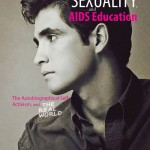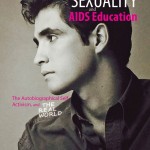I am delighted to report that I have been sucessful in my Fusion Investment Fund bid for study leave to research two academic books, between August this year and the end of January 2015.
These are books are titled ‘Pedro Zamora: A Media Icon for AIDS Education, under contract with Cambria Press, and ‘Straight Girls and Queer Guys: The Heteromedia Gaze upon the Queer Male’, under contract with Edinburgh University Press.
This will include not only research time where I can involve myself looking at archives, examining media texts and holding interviews, but also this will involve visiting other academic institutions, charitable health educational organisations, and practice production houses.
These projects are very exciting, as to some degree they represent a culmination of ideas that I have been working on for many years.
With the Pedro Zamora AIDS education book, I first heard of Pedro Zamora and his status as a leading youth educator on AIDS way back in the early 2000s. Appearing the The Real World TV series, and reaching a worldwide audience, his impact was phenomenal, and his legacy as an influence on AIDS educators is very important. Pedro’s death in 1994, just after The Real World aired, seemed such a loss. Yet his legacy continues, speaking to Latino and gay youth audiences. Whilst I have examined Pedro’s appearances in media texts, in a few of my publications, I have not yet closely examined his impact as an AIDS educator, relative to practice. I have set up a range of interviews with those who not only knew Pedro, but also have been inspired by his impact, and potentially exhibit this in their educational practice
With the ‘Straight Girls and Queer Guys’ book, I will be considering the rise of the relationship between ‘straight girls’ and ‘gay guys’ in the media. This seems like an entirely different prospect (to the Pedro Zamora book), but in many ways its another aspect, of media identification potential. This relationship dates back to the early part of the 20th century, considering the union or camaraderie exhibited between gay men and prostitutes in London, and the use of the secret language of ‘Polari”, a coded language where secret discourse could be exchanged, without the general population getting in on the know. Later gay men’s identification with female movie stars such as Judy Garland, revealed a similar type of coupling – where gay men identified with the sense of tribulation and trial as being outside. Even more later shows like Will and Grace seem to offer this type of union, and on the internet, there is a proliferation of this coupling.
Well enough for now, there’s lots to think about. I am just so pleased that I can get to do these engaging projects. I am now in the process of careful time planning, as I tell my students, time management is everything.
Dr Chris Pullen – Senior Lecturer in Media Theory – The Media School.
 Pedro Zamora, Sexuality and AIDS Education
Pedro Zamora, Sexuality and AIDS Education Pedro Zamora Biography Book Launch and Screening
Pedro Zamora Biography Book Launch and Screening










 Final Bournemouth University publication of 2025
Final Bournemouth University publication of 2025 On Christmas Day in the Morning…
On Christmas Day in the Morning… New Nepal scoping review on maternal & neonatal health
New Nepal scoping review on maternal & neonatal health Fourth INRC Symposium: From Clinical Applications to Neuro-Inspired Computation
Fourth INRC Symposium: From Clinical Applications to Neuro-Inspired Computation ECR Funding Open Call: Research Culture & Community Grant – Application Deadline Friday 12 December
ECR Funding Open Call: Research Culture & Community Grant – Application Deadline Friday 12 December MSCA Postdoctoral Fellowships 2025 Call
MSCA Postdoctoral Fellowships 2025 Call ERC Advanced Grant 2025 Webinar
ERC Advanced Grant 2025 Webinar Horizon Europe Work Programme 2025 Published
Horizon Europe Work Programme 2025 Published Horizon Europe 2025 Work Programme pre-Published
Horizon Europe 2025 Work Programme pre-Published Update on UKRO services
Update on UKRO services European research project exploring use of ‘virtual twins’ to better manage metabolic associated fatty liver disease
European research project exploring use of ‘virtual twins’ to better manage metabolic associated fatty liver disease
Amazing work pals, I really enjoy reading your interesting blogs.
Financial Adviser Bournemouth